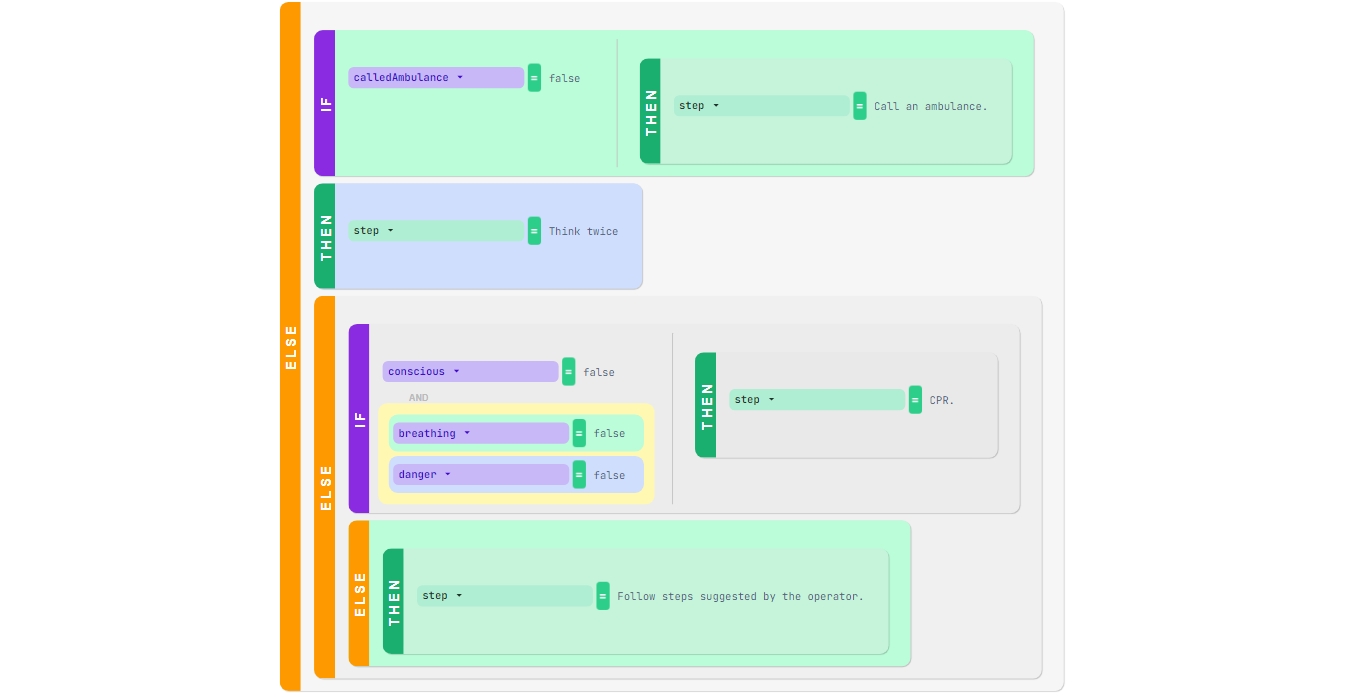Decision Tree Comparison
In this article, we will explain the decision tree comparison.
Introduction
Comparing rules in general can be a very useful feature. Decision trees are among the rule types that support this feature.
Common Use-Cases
You want to review your changes before implementing a new rule version into production.
Visualization of progress between versions of production rules.
The Comparison View
Upon opening the comparison view, you should see a tree very similar to the tree you've originally opened the comparison on. The Reference tree will be superimposed onto the Original tree and discrepancies between the two will be shown by use of a color system, as described below.
The Color System
In comparison view, each tree is given a color. Green for the Original tree (the currently open one) and Blue for the Reference tree (the tree we are comparing to). The color system actually identical to the color system used in decision table comparison.
Tree nodes that are without additional coloring appear in both trees.
If a tree node is colored in Green, this means that it appears ONLY in the Green (Original) tree
If a tree node is colored in Blue, this means that it appears ONLY in the Blue (Reference) tree
Changes are displayed as two nodes, one Green and one Blue, enclosed in a Yellow container. This means that the node was found in BOTH trees, but it is not identical.

Comparison Statistics
To quickly see how and how much the compared rules differ, you can click the chart icon in the top left to display a dropdown summarizing the amount of differences between the trees, enumerated by counting the identical and different tree nodes.